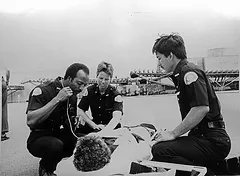Blog
Help for Rural Emergency Responders in Arizona is On the Way

For rural areas across the country including those here in Arizona, the expansion of the Telecommunication Loan Program recently announced by the USDA is good news in a summer full of headlining disasters. The changes will make it easier for rural communities to fund projects related to emergency communications. The loan program provides funds for the construction of interoperable, integrated emergency communications networks, deployment of dual-use wireless networks, and implementation of next generation 911.
One goal of the expansion is to enable cross-agency communication during emergency situations. Creating a communication system that allows police, firefighters, emergency management personnel, EMTs, and other first responders to communicate with each other was one of the most important recommendations coming out of the 9-11 Commission report. In rural areas, this type of expanded communication is even more critical as the time it takes for first responders to reach the site of an accident or emergency is often longer.
The expanded program also enables rural areas like Mohave, Navajo, and Cochise counties to increase their broadband and wireless network coverage with dual-use technologies. Better accessibility for emergency personnel means better accessibility by everyone. The program can benefit every county and every citizen of Arizona. Even if you live in a county with a population center like Maricopa or Pima, there are still rural pockets in outlying areas that can benefit from these improvements. For the farmers and ranchers of Arizona, and the tourists and truckers that travel throughout the state, this means better wireless service and more consistent connectivity.
In addition to these benefits, the program also helps rural areas speed up the deployment process for next generation 911 including E911 capabilities. Projects aimed at increasing the service area of wireless networks in conjunction with these additional 911 capabilities will allow people to send text, picture, and video messages to 911 operators. In time critical emergency situations, information is crucial to saving lives and enabling callers to provide additional information in these forms enhances the effectiveness of responders. Advances in E911 also enable operators to identify the precise location of a caller for first responders, which in rural areas could be the difference between life and death.

















